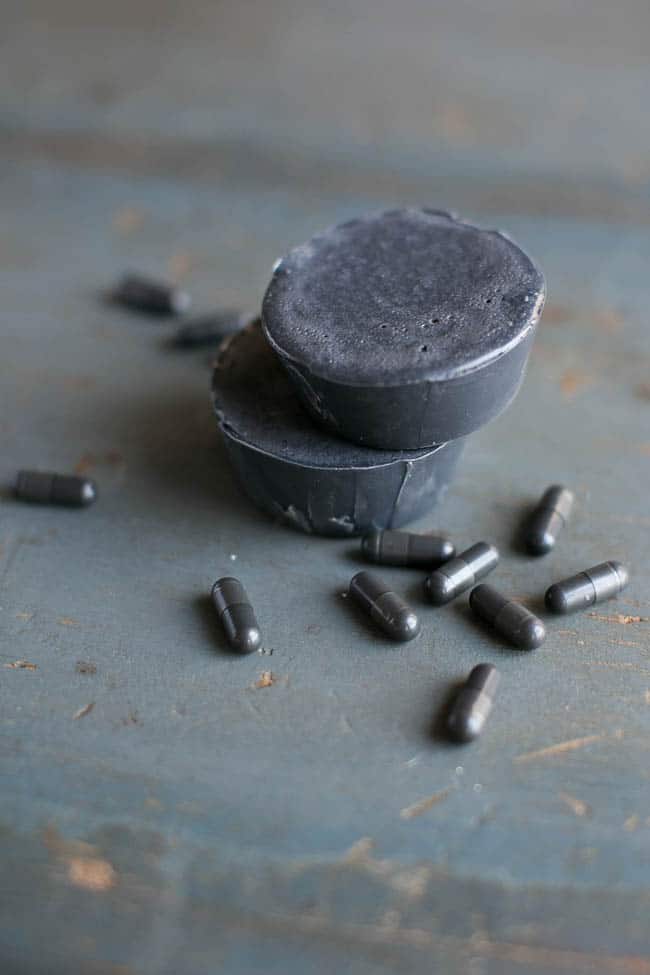I’ll admit I was skeptical about activated charcoal soap at first. This gal loves her body wash and foaming hand soap. But now I’m hooked. I have become a total convert to the simple bar of soap (makes sense why it’s been around so long)!
Activated charcoal is an odorless, black powder that has impressive absorptive properties. When used in soap, it is detoxifying, exfoliating, clarifying, and just plain ol’ feels good—all without drying out the skin (I use it head to toe, face included).
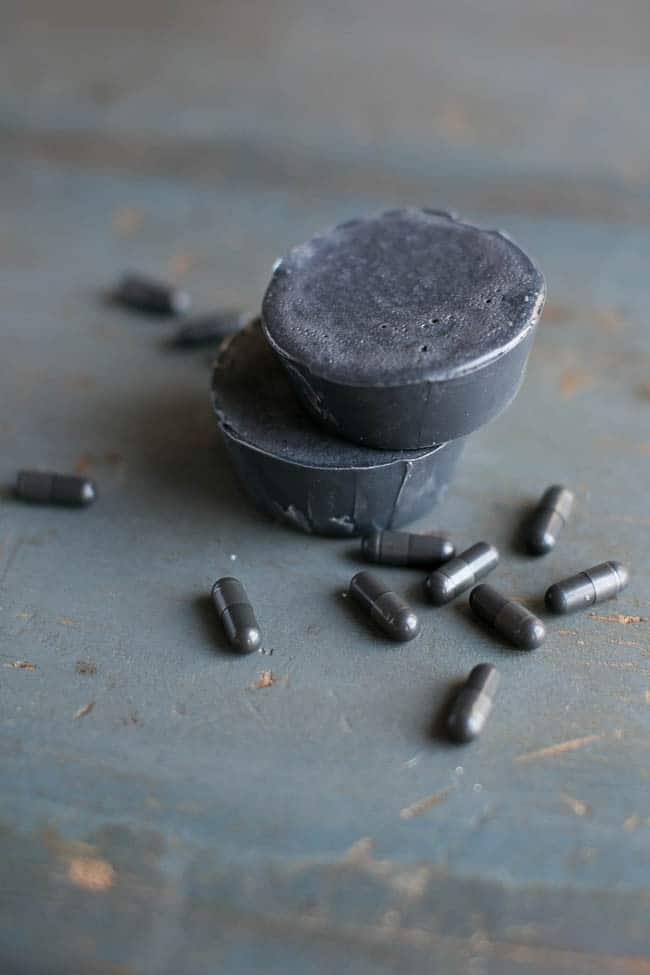
Jump to:
Don’t worry—it’s not the same kind of charcoal that you would find in a chimney sweep or on burnt pieces of food. It’s 100% food grade and perfectly safe for use in bath and body products like these charcoal soaps. Plus, melt-and-pour soap is embarrassingly easy to make (which is why I love it), so scroll down for an easy, detoxifying activated charcoal soap recipe.
What Is Activated Charcoal?
Activated charcoal is a form of carbon that has been treated with oxygen to make it highly porous and increase its surface area, allowing it to absorb more substances. Activated charcoal is made by heating organic materials like wood, coconut shells, or sawdust to high temperatures, which removes all the oxygen and leaves behind carbon. This carbon is then treated with oxygen again, creating the porous structure that makes activated charcoal so effective at absorbing toxins and impurities. Activated charcoal is commonly used as a natural remedy for upset stomachs and to relieve bloating and gas. It is also found in air filters to remove pollutants and in water filters to remove impurities and contaminant. Activated charcoal is great for oily skin and to achieve that happy glow we all crave!
Why We Love Activated Charcoal Soap
Charcoal soap is a popular skincare product, for good reason. As the name suggests, charcoal soap contains activated charcoal, which gives it its distinctive appearance and makes it so effective. The benefits of charcoal soap are far too many to mention – including its ability to deeply cleanse and detoxify the skin. Many people with acne or dry skin swear by activated charcoal soap. Activated charcoal soap is also believed to help unclog pores, exfoliate dead skin cells, and improve overall skin texture and tone.
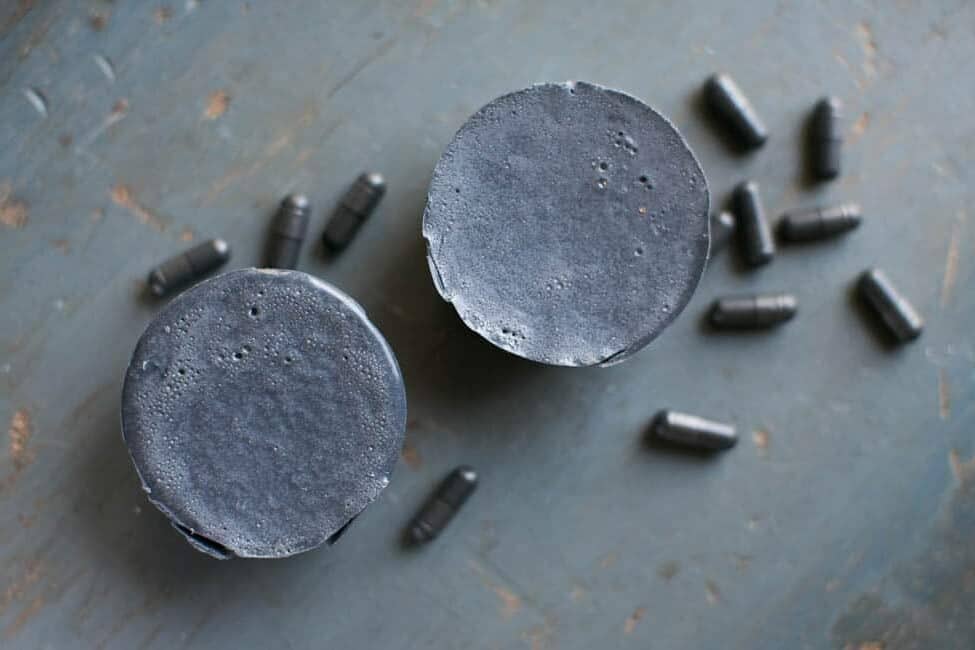
Charcoal soap is usually black in color due to the activated charcoal, which is added to the soap during the manufacturing process. This ingredient gives the activated charcoal soap a unique appearance and is what makes it so effective at removing impurities from the skin.
Contrary to popular belief, charcoal soap does not actually lighten skin. Rather, it works to brighten the complexion by removing impurities and promoting the growth of new, healthy skin cells. For those with sensitive skin, charcoal soap can be a gentler alternative to harsher exfoliating products, as it can help to unclog pores without causing irritation. Overall, charcoal soap is a great way to achieve a clearer, brighter complexion without the use of harsh chemicals or ingredients.
If you’re interested in making your own activated charcoal soap at home, it’s surprisingly easy to do! All you need is some activated charcoal powder, which can be purchased online or at health food stores, and a few other ingredients like olive oil, coconut oil, and lye. With its deep cleansing properties and unique appearance, activated charcoal soap is a must-have!
Benefits of Activated Charcoal Soap
As a kid, my dad pulled out activated charcoal all the time for everything from bee stings to upset stomachs. But now beauty companies are turning to activated charcoal more and more as a key ingredient in masks, cleansers, and even toothpaste!
Activated charcoal is most effective for people with acne-prone skin, as it gently exfoliates and draws out dirt, oil, and makeup that can clog pores. Adding tea tree oil adds natural anti-fungal and antiseptic properties [source].
Here, we take a closer look at the myriad benefits activated charcoal can provide when used as a beauty product:
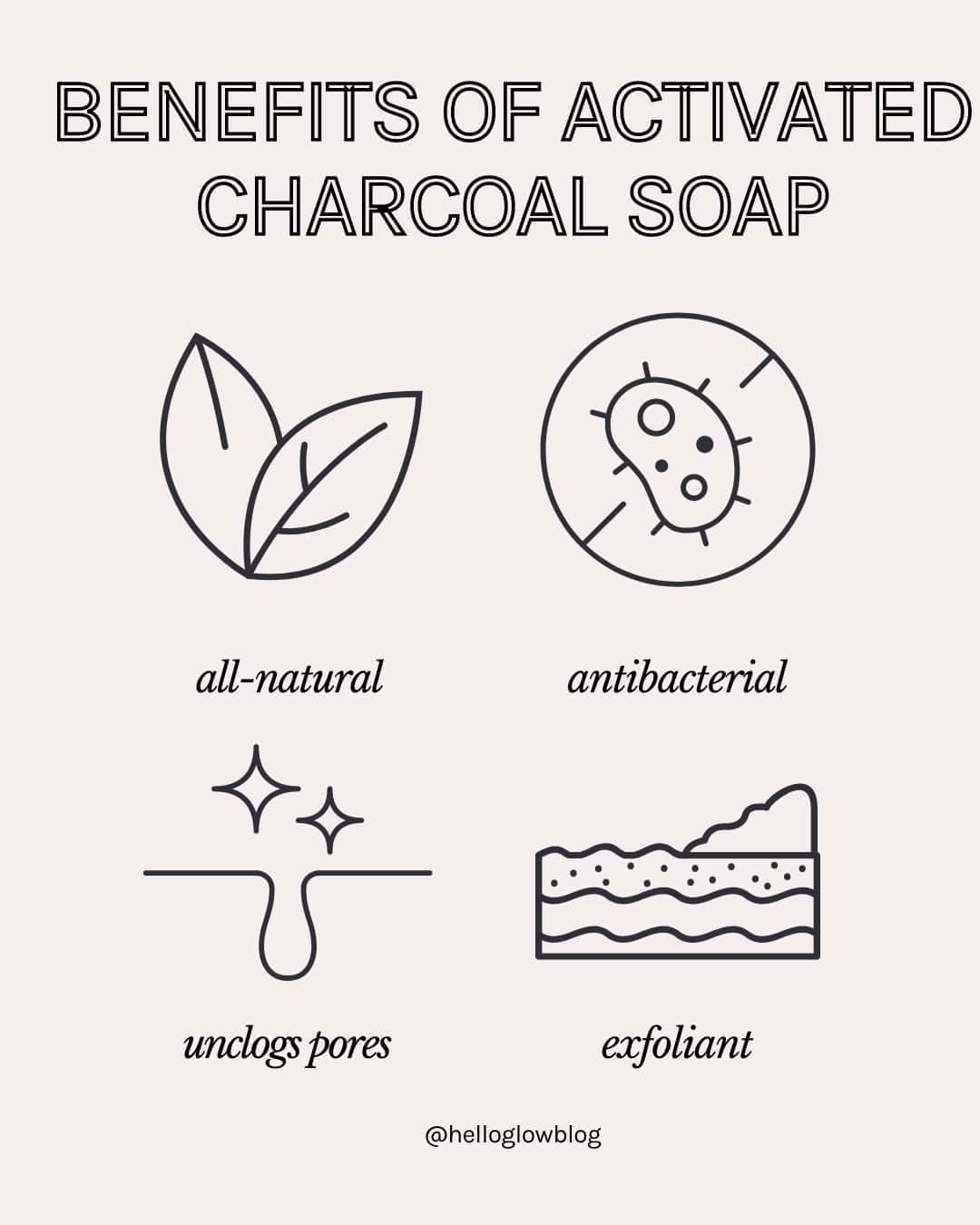
It’s all-natural.
Why depend on chemicals to leave your skin looking its finest when you can use something found in nature? Activated charcoal not only works, but it also won’t cause adverse reactions—or lead to pesky breakouts due to chemical reactions.
It’s antibacterial.
Activated charcoal has some pretty impressive antibacterial properties. One study even found that it has the ability to destroy E.coli [source].
It unclogs pores.
Even with the chemical-laden, store-bought stuff, it’s hard to unclog the pores on your face (and your face contains a whopping 20,000+ of them).
But activated charcoal does a pretty impressive job. It visibly reduces pore size, thanks to its ability to clean out the dirt, grease, and grime inside each one.
It exfoliates.
The texture of activated charcoal makes it a great, all-natural exfoliator. It helps slough off dead skin cells to reveal brighter, smoother, glow-ier, and more youthful-looking skin underneath!
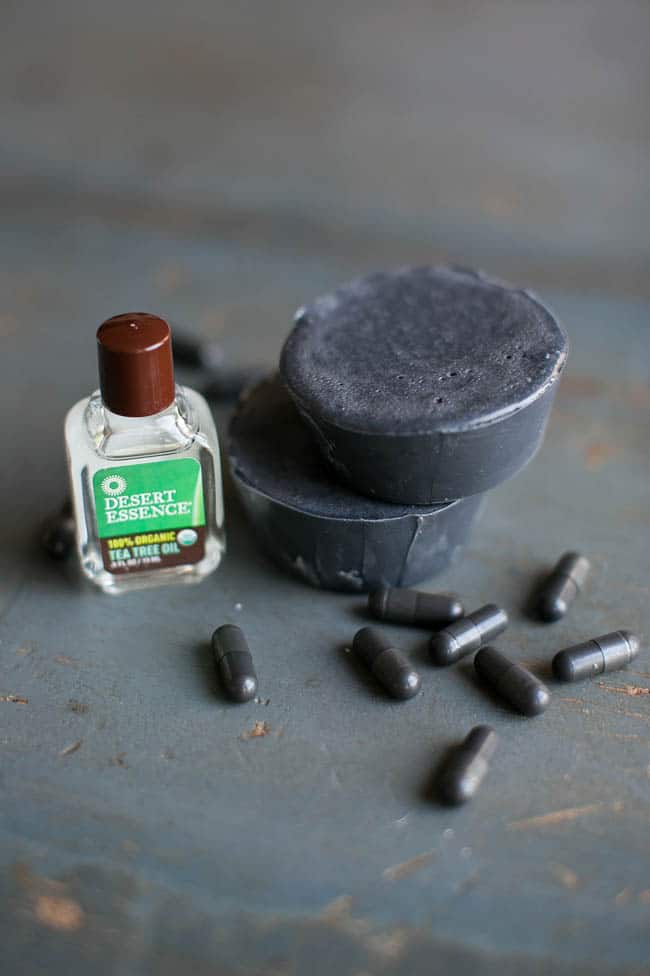
How to Make Activated Charcoal Soap
I’m not yet ready to learn how to make my own soap with lye—but hey, if you want to, check out our post on cold process soap here. So I’ve become a big fan of melt-and-pour soap base.
There are a ton of varieties for bases: plain glycerin, olive oil, goat milk, honey, and oatmeal. Here, I used a shea butter base for an added major moisture dose.
But feel free to use whichever soap base and oils you prefer! If you’re wondering how to use melt-and-pour-soap or what kind of base to use when, check out our Complete Guide to Using Melt-and-Pour Soap.
Ingredients
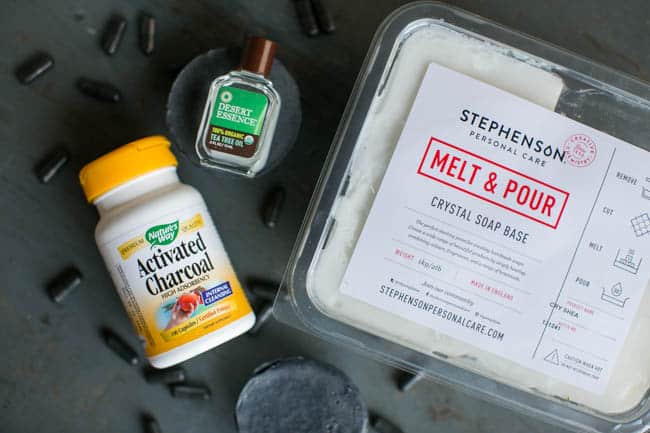
- Shea butter soap base. Shea butter, like Greek yogurt, helps diminish the appearance of fine lines and wrinkles, treats acne and blemishes, cuts down on skin inflammation, and more [source]. You can also add additional moisturizing oils (like argan or coconut) or even honey if you have really dry skin.
- Activated charcoal capsules. If you can’t find capsules at a pharmacy, you can buy it online or substitute for powder.
- Tea tree essential oil has natural anti-fungal and antiseptic properties to add to the mix, making the soap suitable for acne-prone skin.
See recipe card for exact quantities.
Instructions
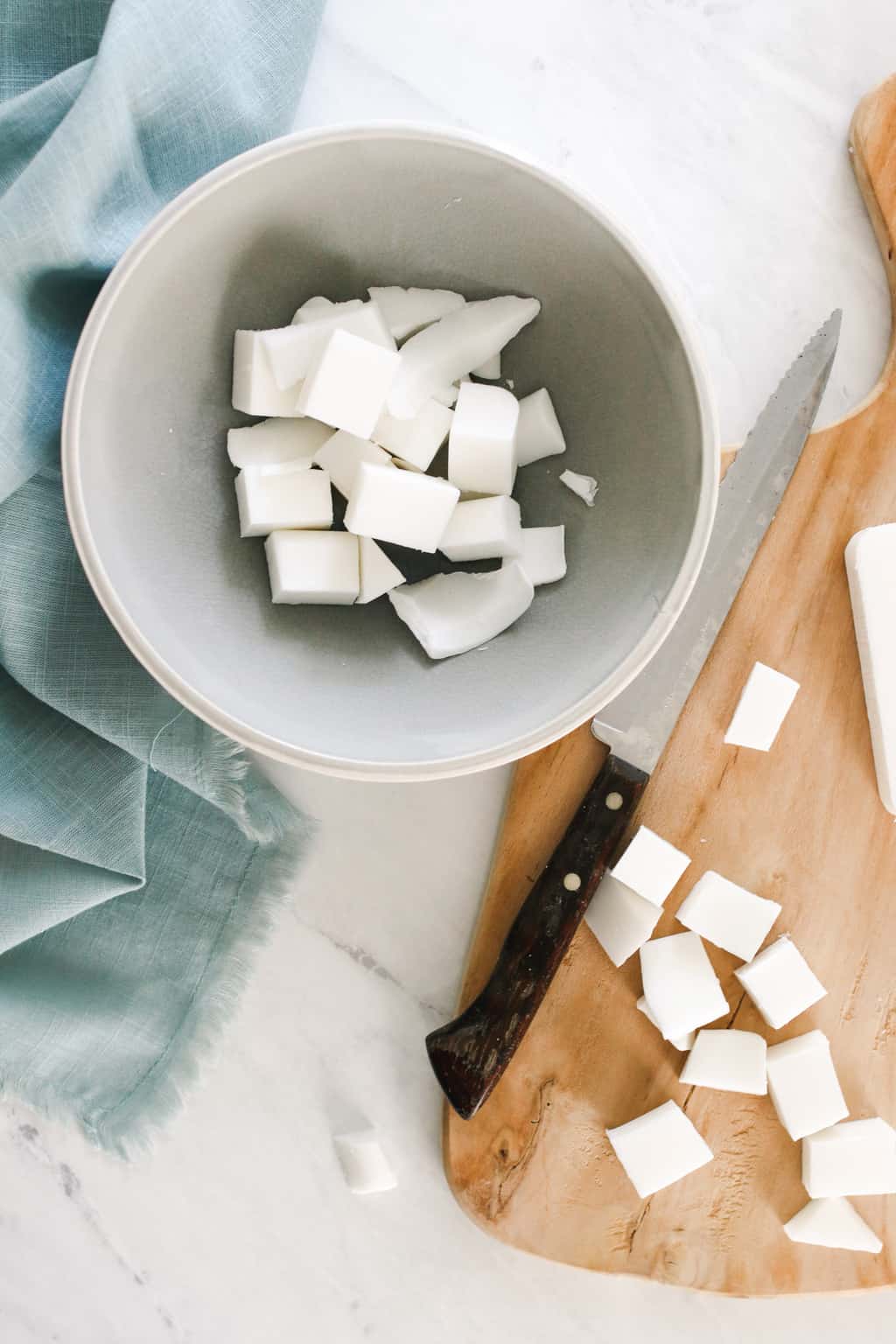
Cut the soap base into small chunks and place in a microwave-safe bowl. Heat in 30-second intervals until completely melted. (You can also use a double boiler to melt the soap if you prefer.)
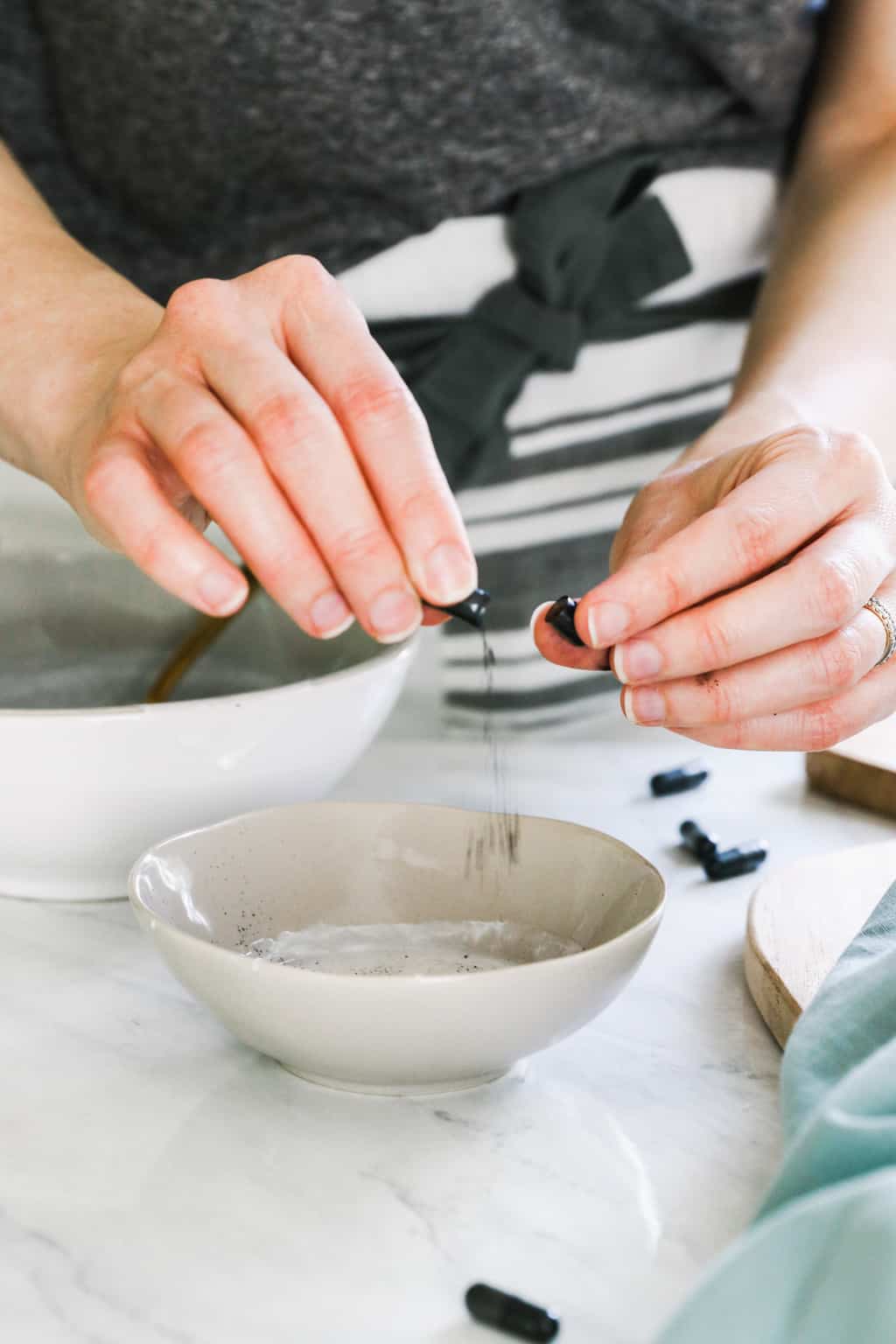
Remove a small amount of soap into a cup and let cool slightly. Open the activated charcoal capsules and mix charcoal into slightly cooled soap until blended and no lumps remain. Add back into the rest of the melted soap base, and stir well to fully disperse charcoal.
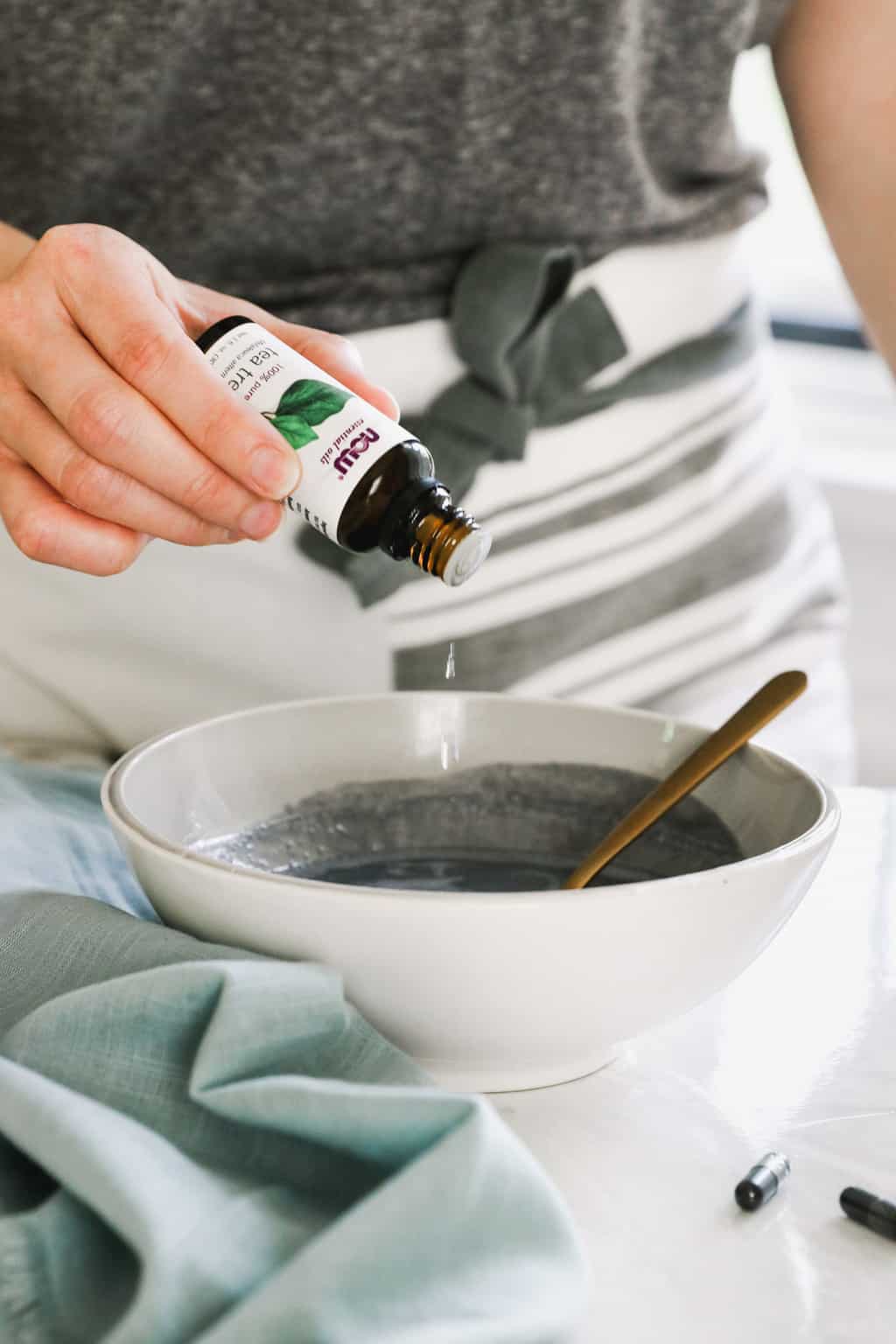
Add the tea tree oil. If you don’t like the smell of tea tree, you can add peppermint essential oil to hide the scent.
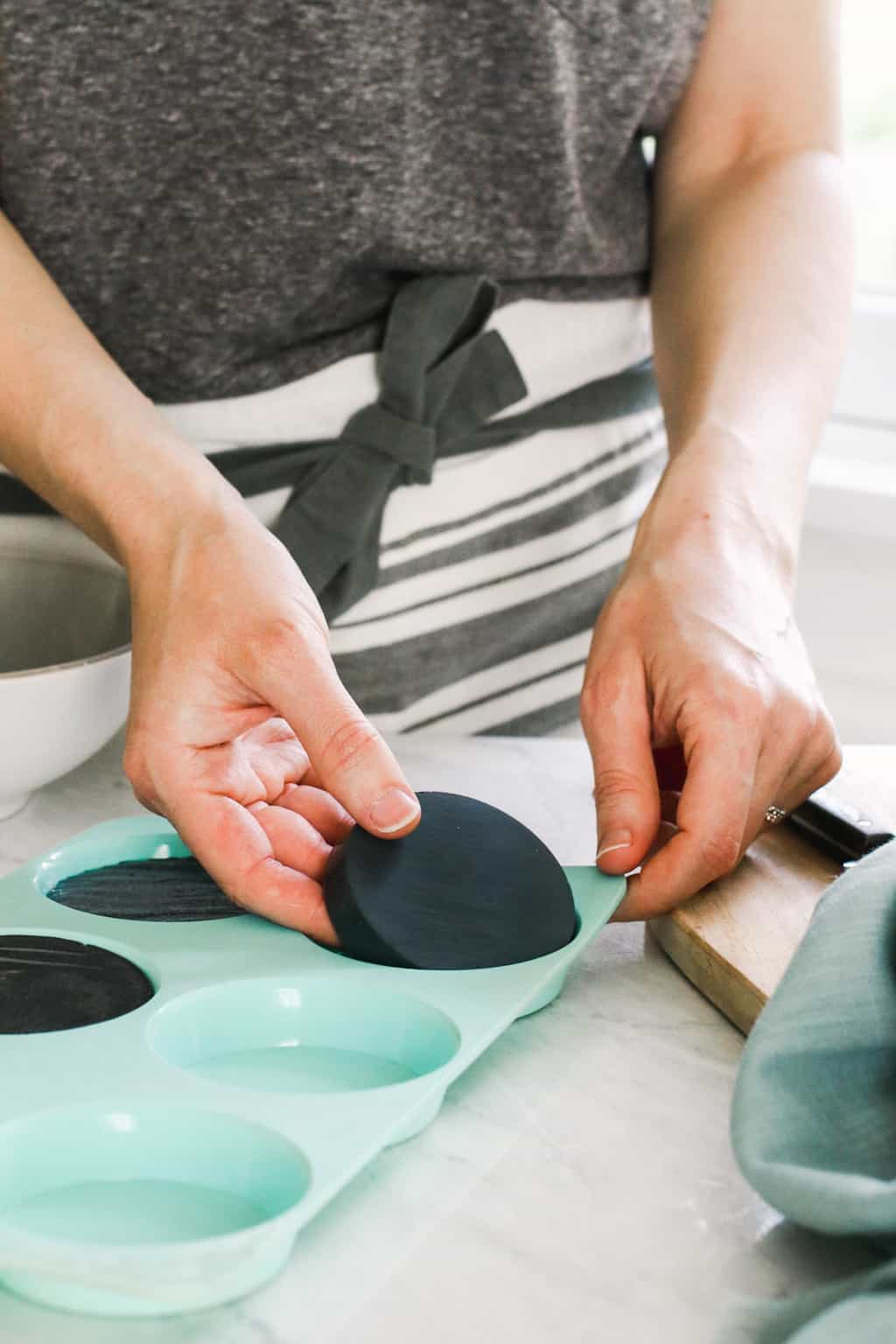
Pour into a mold (silicone baking molds and muffin tins work well) and let cool completely before removing.
Top tips
Adding charcoal to a small portion of soap should help it mix better. If you’re having problems with clumping, use a wire whisk to break them up.
Only when you’ve gotten rid of all clumps should you add it to the larger portion of soap base.
Feel free to lightly coat your muffin tin with nonstick spray if you’re worried about your soaps sticking. Otherwise, just put the muffin tin in the freezer for 5–10 minutes, and they should pop right out.
These soaps should last about 6 months.
Variations
- You can replace the shea butter soap base with another soap base of your choosing. Some good options include plain glycerin, olive oil, goat milk, honey, and oatmeal.
- If you won’t like the smell of tea tree oil, you can either mask it by adding peppermint oil to the mix, or replace with another antibacterial essential oil, such as lemongrass, eucalyptus or orange oil [source].
- If you prefer a liquid soap, you can follow this recipe.
Activated Charcoal Soap FAQs
Sure! Use whatever you have on hand.
I recommend using pure activated charcoal without any additional ingredients so that you don’t end up irritating your skin.
I used approximately 4 grams of activated charcoal (or 1 teaspoon) for every ½ pound of soap base. But you can always tweak that ratio slightly without hurting the recipe.
A good rule of thumb is roughly 1–2 teaspoons of carrier oil per pound of soap base. The exact ratio depends on the type and brand of soap base you use as well as your skin’s particular needs. Just be aware that adding too much oil may affect the firmness and lather of the final bar. It’s best to test it out until you find a ratio you like.
Yes! We even show you how to right here.
If using a muffin tin like I did, this makes about 6 bars of soap.
I have always used Our Earth’s Secrets soap base. While they’re not perfect, they disclose their ingredients on the label and try to stay away from anything too harsh, so I feel confident using it on my skin.
No, the soap itself may create a gray-colored lather or leave a bit of residue in the tub, but it won’t stain. If you get any loose charcoal on your clothes while making the soap, rinse them immediately, and spritz with a bit of laundry spray. It should come right out in the wash.
Activated charcoal soap has numerous benefits for the skin. It is known for its ability to absorb excess oil and remove toxins, making it an excellent choice for those with oily skin. Charcoal soap can also help to remove dead skin cells, leaving the skin feeling soft and smooth. Additionally, charcoal soap is a natural facial cleanser, making it an ideal choice for those with sensitive skin.
While there is no scientific evidence to suggest that charcoal soap can lighten skin, it is known for its ability to absorb excess oil and remove impurities, which can help to improve the overall appearance of the skin. Charcoal soap is a natural and gentle way to cleanse the skin, making it an excellent choice for those who want to achieve a brighter, more radiant complexion.
Activated charcoal soap is generally safe for all skin types, but it’s important to do a patch test first. If you have sensitive skin, it’s recommended to use charcoal soap in moderation and avoid using it too frequently, as it can be drying. If you experience any irritation or discomfort, discontinue use.
Yes, you can make activated charcoal soap at home using simple ingredients such as activated charcoal, soap base, and essential oils. There are many recipes available online, and making your own charcoal soap can be a fun and cost-effective way to enjoy its benefits. However, it’s important to follow the instructions carefully and ensure that all ingredients are thoroughly mixed to avoid any potential skin irritation
DIY Detox Tea Tree + Charcoal Soap
This detoxifying (and oh-so-easy) activated charcoal soap recipe is great for acne-prone skin!
Yield: 6 small soaps
Cost: $10
Instructions
-
Cut the soap base into small chunks and place in a microwave safe bowl. Heat in 30-second intervals until completely melted.
-
Remove a small amount of soap into a cup and let cool slightly. Open the charcoal capsules, and mix charcoal into slightly cooled soap until blended and no lumps remain. Add back into the rest of the melted soap base and stir well to fully disperse charcoal.
-
Add the tea tree oil. If you don’t like the smell of tea tree, you can add peppermint essential oil to hide the scent.
-
Pour into mold (I used a silicon mold I had lying around, but a muffin tin works great) and let cool completely before removing.
Notes
This soap should last about 6 months.
Not in the mood to DIY it? Here are some of our favorite charcoal beauty products:
[show_shopthepost_widget id=”2540448″]
Want to try more ways to make your own soap? Here are some of our readers’ favorite recipes:
This post was medically reviewed by Dr. Jennifer Haley, a board-certified dermatologist with extensive experience in medical, cosmetic, and surgical dermatology. Learn more about Hello Glow’s medical reviewers here. As always, this is not personal medical advice, and we recommend that you talk with your doctor.
